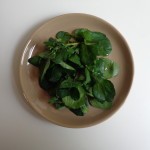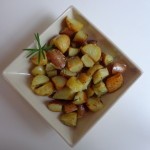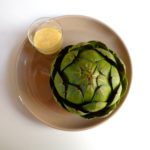 Cream puffs filled with vanilla ice cream and topped with hot chocolate sauce — who first came up with this wonderful idea? It turns out that profiteroles have a long and complex history. Apparently a 16th-century Italian chef named Popelini, who worked for Catherine de Medici, wife of the French king Henri II, was the first to think of putting a filling inside cream puffs. (Whether or not he actually invented the puffs is not clear). Various brilliant French chefs later added savory fillings, whipped cream and, eventually, ice cream. And then an unsung genius added the hot chocolate topping.
Cream puffs filled with vanilla ice cream and topped with hot chocolate sauce — who first came up with this wonderful idea? It turns out that profiteroles have a long and complex history. Apparently a 16th-century Italian chef named Popelini, who worked for Catherine de Medici, wife of the French king Henri II, was the first to think of putting a filling inside cream puffs. (Whether or not he actually invented the puffs is not clear). Various brilliant French chefs later added savory fillings, whipped cream and, eventually, ice cream. And then an unsung genius added the hot chocolate topping.
Profiteroles / Profiteroles
I first tasted profiteroles at a Paris restaurant called Le Procope, which funnily enough was founded by another Italian chef, Procopio of Sicily, who is credited with introducing ice cream to France. This was about a century after Popelini moved to France. Having tasted profiteroles, of course I had to try to make them. They are prepared with a dough that is cooked on the stove top, hence the original French name of this pastry: pâte à chaud (heated dough), which later segued into pâte à choux (dough for cabbages, because to the French cream puffs look like mini-cabbages). This in turn has segued into a French endearment, ‘Mon petit chou,’ which does not mean ‘My little cabbage,’ but rather, ‘My little cream puff.’ And indeed, when you open your oven door to find your mounds of dough puffed up and golden and round as cabbages, you may find yourself crying out, with warm feelings of endearment, ‘Ah, mes petits choux!’
The Everyday French Chef will be back on Monday. Happy cooking!











 When I was a kid growing up in the United States, artichokes were considered a great delicacy in my family. But as we lived far from California, where they were grown, they were expensive. My mother would cook a single artichoke for the four of us, cut into quarters. When I came to France and was served a whole artichoke for the first time, I thought it must be a mistake. But artichokes are available everywhere here. They grow wild along the roadside in parts of the south, their crowns bursting into glorious purple bloom if they remain unharvested. So it wasn’t a mistake. I had simply landed in paradise.
When I was a kid growing up in the United States, artichokes were considered a great delicacy in my family. But as we lived far from California, where they were grown, they were expensive. My mother would cook a single artichoke for the four of us, cut into quarters. When I came to France and was served a whole artichoke for the first time, I thought it must be a mistake. But artichokes are available everywhere here. They grow wild along the roadside in parts of the south, their crowns bursting into glorious purple bloom if they remain unharvested. So it wasn’t a mistake. I had simply landed in paradise.

